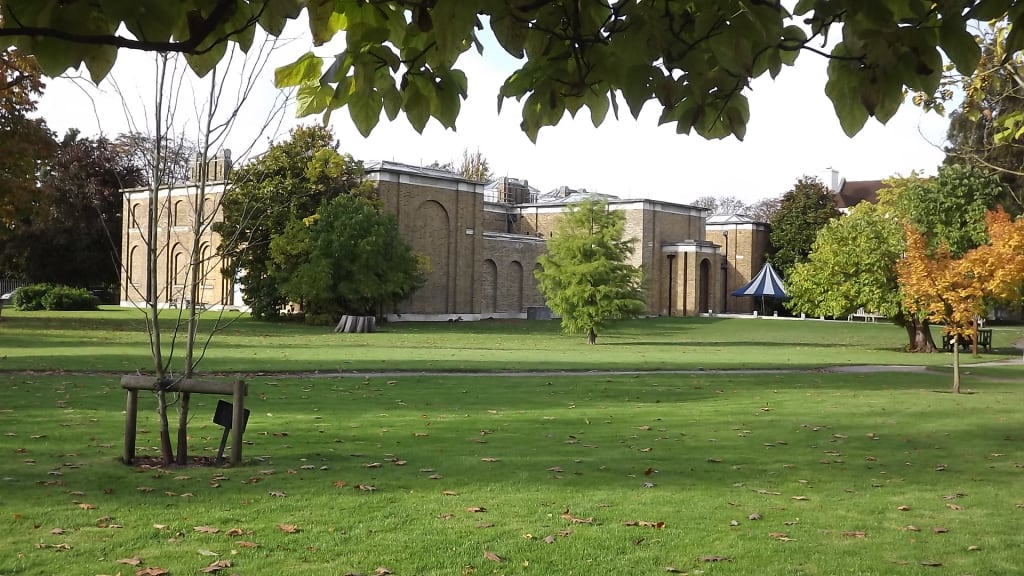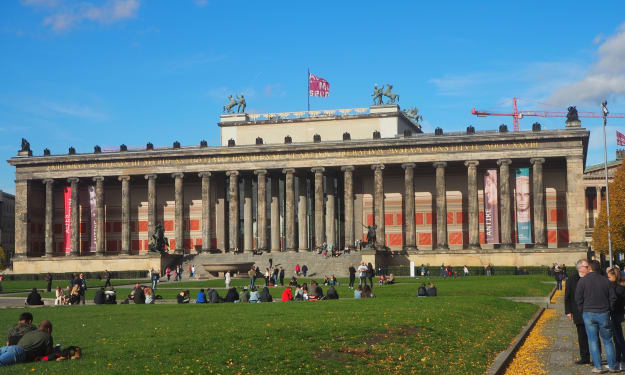Dulwich Picture Gallery
A London art gallery with a fascinating history

There is something very special about the Dulwich Picture Gallery. For one thing, it is well away from the artistic hub of central London and requires an extra effort for anyone who wishes to visit it. That said, the effort is not an enormous one if the visitor is willing to hop on board a suburban overground train at Victoria Station, travel three stops to West Dulwich station and then take a 10-15 minute walk.
The reward for so doing is the viewing of a remarkable collection of paintings that should never have been there in the first place, if all the original plans had been fulfilled.
History of the Gallery
In 1790 Prince Michal Poniatowski, brother of the King of Poland, commissioned a London-based art dealer, Noel Desenfans, to acquire pictures that would be suitable for a royal collection. For five years he did so enthusiastically, but in 1795 Poland disappeared off the map when it was partitioned between Austria, Prussia and Russia and the King was forced to abdicate. This left Noel Desenfans with a collection of pictures and no-one to sell them to.
He then became partners with another art dealer, Francis Bourgeois, who proceeded to add to the collection (at Desenfans’s expense). When Desenfans died in 1807, Bourgeois became his heir and had the idea of establishing a public gallery for displaying the pictures. He contracted the architect Sir John Soane, who was a personal friend, to design a suitable building at Dulwich, as he had decided to bequeath the collection to Dulwich College. Bourgeois died in 1811, but there was not enough money in his will to build the gallery. However, Noel Desanfans’s widow came up with the rest of the cash and the project went ahead, eventually opening its doors in 1817 as England’s first public art gallery (the National Gallery followed in 1824).
The Gallery Building
What the visitor sees, therefore, is Sir John Soane’s innovative building (largely rebuilt after World War II when the original gallery, emptied of its contents, suffered bomb damage in 1944) and the collection of paintings that should have gone to Poland. Modern taste in art display means that there is not enough room for the entire collection of some 370 pictures to be on the walls at the same time, so the presentation is changed in part from time to time. The space problem was made worse over the years by new additions, particularly the Linley Bequest of Gainsborough portraits (and others) in 1835 and the Fairfax Murray gifts of British portraits between 1911 and 1918.
Although the basic plan of Soane’s building has remained intact, the gallery was extended in the 20th century. There is therefore not just the main gallery of five linked spaces in a straight row, each space lit by a glass “lantern roof”, but several side rooms and a parallel gallery of smaller spaces that is used for temporary exhibitions. Everything is on one level, so there are no stairs or steps to worry about and the gallery is wheelchair friendly.
There can be very few public art galleries in the world (if any) that contain at their heart a mausoleum in which lie the founders’ coffined remains, but that is the case at Dulwich Picture Gallery. The visitor can see the three coffins (of Bourgeois and Mr and Mrs Desenfans) in a small stone space into which yellow light pours from the skylight above. It is a very strange experience!
The Art Collection
So what about the art? The collection made by the founders concentrated very much on 17th and 18th century art, especially that from Italy, France and the Low Countries. The later gifts and bequests mentioned above were responsible for virtually all the British art in the collection.
When walking round the gallery and reading the highly informative plaques on the walls, one gets the impression that some of the sellers must have seen Bourgeois and Desanfans coming! This is because a number of the paintings which the founders obviously thought were by Titian or Rembrandt (for example) have later been shown to be by artists trained by or working under the instruction of the masters. That is not to say that they are not very fine works in their own right, but they are not entirely “kosher”. In the founders’ defence, it must be stressed that it is only the use of modern techniques that has revealed the truth about some of the paintings they collected. It should also be said the gallery contains many paintings that are genuine originals by major artists and are of international importance.
Another oddity of the collection is that Bourgeois fancied himself as an art restorer and he sometimes took it upon himself to “improve” an artist’s work by adding an extra strip of canvas at the top, bottom or side of a painting, which he then painted accordingly, so that a pair of paintings by the same artist would appear symmetrical on the wall, or a painting would fit the frame he happened to have available, no matter how this affected the balance of the work as originally envisaged by the artist. Some of these additions have been removed in later restorations but others have stayed put.
Some highlights of the Dulwich collection include:
“A Girl at a Window” by Rembrandt (1606-69). This is a very atmospheric portrait of an unknown girl with a “Mona Lisa” smile.
“Old Walton Bridge over the Thames” by Canaletto (1697-1768). An extraordinary wooden bridge is set against a stormy sky with a wealth of other details, including portraits of the patron who commissioned the painting and the artist himself.
“The Woman Taken in Adultery” by Guercino (1591-1666). A wonderful study of faces and hands that demonstrates the variety of meanings that a great artist can convey.
“Venus and Adonis” by Titian (c.1490-1576) (or more likely by a studio apprentice). A number of studio copies were made of the painting that now hangs in the Prado, Madrid. This version has Adonis wearing a fetching Tyrolean hat.
“Rinaldo and Armida” by Poussin (1594-1665). An illustration of a story by the Italian poet Torquato Tasso, in which a Saracen sorceress (Armida) plots to kill a Christian soldier (Rinaldo) but falls in love with him instead. The painting graphically shows the moment when she gazes on his face as he sleeps while Cupid restrains the arm that holds a dagger.
“The Linley Sisters” by Gainsborough (1727-88). A portrait of two musical celebrities of their day at the height of their reputation as gifted singers, as well as being society beauties who were, however, destined to die young. Gainsborough, who knew them personally, captured their beauty and intelligence perfectly in this portrait.
Needless to say, there is plenty more to entice and entertain in this gallery, which allows the visitor to step back in time and enjoy an experience virtually identical to that of Charles Dickens or Vincent van Gogh when they made their visits in the 19th century.
Modern improvements have been kept at arm’s length, with the book/gift shop tucked away in a side room (although it is still part of the gallery with pictures on the walls), and the toilets and refreshment room are in a separate building reachable via a short cloister. The only likely distraction might come from groups of schoolchildren sitting on the floor and being lectured in cut-glass accents (Dulwich is one of London’s posher suburbs) about the pictures on the walls. However, that is an occupational hazard of virtually any art gallery, anywhere!
Despite being slightly out of the way, Dulwich Picture Gallery is not particularly difficult to reach and the collection and the atmosphere in which it is presented are well worth the effort involved. On a fine day it is also a delight to sit in the peaceful gardens outside the gallery, spot the squirrels, and watch the world go by!
About the Creator
John Welford
I am a retired librarian, having spent most of my career in academic and industrial libraries.
I write on a number of subjects and also write stories as a member of the "Hinckley Scribblers".






Comments
There are no comments for this story
Be the first to respond and start the conversation.